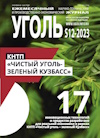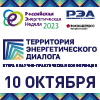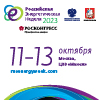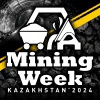
ECONOMIC
Original Paper
UDC 338.45:622.6/.7© L.M. Fomicheva, O.N. Pronskaya., M.V. Zaitseva., E.M. Kiseleva., V.V. Kurennaya, 2023
ISSN 0041-5790 (Print) • ISSN 2412-8333 (Online) • Ugol’ – Russian Coal Journal, 2023, № 10, pp. 59-65
DOI: http://dx.doi.org/10.18796/0041-5790-2023-10-59-65
Title
FUEL SELECTION AND COMPARISON OF OPERATION OF AUTONOMOUS LOW-POWER HEAT SUPPLY SYSTEMS
Authors
Fomicheva L.M.1, Pronskaya O.N.1, Zaitseva M.V.2, Kiseleva E.M.1, Kurennaya V.V.1
1 Moscow Polytechnic University, Moscow, 107023, Russian Federation
2 I.T. Trubilin Kuban State Agrarian University, Krasnodar, 350044, Russian Federation
Authors information
Fomicheva L.M., PhD (Economic), Associate Professor
Pronskaya O.N., Doctor of Economic Sciences, Associate Professor
Zaitseva M.V., PhD (Economic), Associate Professor,
Kiseleva E.M., PhD (Economic), Associate Professor
Kurennaya V.V., Doctor of Economic Sciences, Professor
Abstract
In the context of the search for efficient and environmentally acceptable methods of heat supply to various facilities, the analysis and comparison of gas and coal heating systems are of paramount importance. This research question is especially relevant for remote and northern regions of Russia, where gas supply may be limited or impossible. The purpose of this study is to compare gas and coal heating systems in terms of their economic, technical and environmental efficiency. The paper used data on the characteristics and operation of gas and coal heating systems, as well as methods of mathematical analysis and statistical processing to calculate the key parameters of the efficiency of these systems. The analysis showed that coal systems have a higher coefficient of thermal conductivity (k = 0.05 W/m · °C), a higher rate of change of heat flux (210,000 W), a high density of material (1300 kg/m3) and a wider temperature field in the room (22 °C to 18 °C). While gas systems are characterized by a higher specific heat capacity of the material (840 J / kg · ° C) and a more stable temperature field in the room (20 ° C to 17 ° C). The results of the study emphasize that the choice between gas and coal heating systems should be based on the specific conditions and needs of the facility, while both types of systems have their advantages and disadvantages.
Keywords
Energy efficiency, Gas emission, Condensing boiler, Convection boiler, Environmental sustainability.
References
1. Ciupek B., Judt W., Urbaniak R. & K?osowiak R. The emission of carbon monoxide and nitrogen oxides from boilers supplied by a pellet under the influence of changes in the air-fuel equivalence ratio. J. Ecol. Eng., 2019, 20.
2. Jaworek A., Sobczyk A.T., Marchewicz A., Krupa A. & Czech T. Particulate matter emission control from small residential boilers after biomass combustion. A review. Renew. Sustain. Energy Rev., 2021, 137, 110446.
3. Kurc B., Lijewski P., Rymaniak ?., Fu? P., Pig?owska M., Urbaniak R. & Ciupek B. High-Energy Solid Fuel Obtained from Carbonized Rice Starch. Energies, 2020, 13, 4096.
4. Lee C., Jung D.E., Lee D., Kim K.H. & Do S.L. Prediction Performance Analysis of Artificial Neural Network Model by Input Variable Combination for Residential Heating Loads. Energies, 2021, 14, 756.
5. Mahmoud M., Ramadan M., Naher S., Pullen K. & Olabi A. The impacts of different heating systems on the environment: A review. Science of The Total Environment, 2021, (766). Available at: https://doi.org/10.1016/j.scitotenv.2020.142625(accessed 15.09.2023).
6. Toropov A.L. Issues of operating efficiency of convection wall gas boilers with apartment heat supply. Plumbing, Heating, Air Conditioning, 2021, (6), pp. 42-45. Available at: https://www.c-o-k.ru/articles/voprosy-effektivnosti-raboty-konvekcionnyh-nastennyh-gazovyh-kotlov-pri-pokvartirnom-teplosnabzhenii(accessed 15.09.2023).
7. Vignali G. Environmental assessment of domestic boilers: A comparison of condensing and traditional technology using life cycle assessment methodology. Journal of Cleaner Production, 2017, (142), pp. 2493-2508. DOI: https://doi.org/10.1016/j.jclepro.2016.11.025.
8. Ye Y., Qiu D., Wang H., Tang Y. & Strbac G. Real-Time Autonomous Residential Demand Response Management Based on Twin Delayed Deep Deterministic Policy Gradient Learning. Energies, 2021, 14, 531.
9. Butuzov V.A., Tomarov G.V., Alkhasov G.B. & Badavov G.B. Geothermal energy of Russia: Resource base, electric power, heat supply (review). Teploenergetika, 2021, 12, pp. 1-15. (In Russ.).
10. Zmieva K.A. Problems of energy supply of Arctic regions. Russijskaya Arctika, 2020, 8, pp. 5-14. DOI: 10.24411/2658-4255-2020-10086. (In Russ.).
11. ARVE Newsletter. Renewable Energy market in Russia: current status and development prospects, July 2021, 43 p. (In Russ.).
12. Karasevich V.A. Prospects of using RES for heat supply needs in the regions of the Russian Federation // SOC (Santekhnika, otoplenie, conditsionirovanie), 2021, (5), pp. 56-58. (In Russ.).
13. Mikhailov V.E., Smolkin Yu.V. & Sukhorukov Yu.G. The main directions of improving the efficiency of power equipment of CHP. Teploenergetika, 2021, (1), pp. 63-68. DOI: 10.1134/S0040363620120048. (In Russ.).
14. Nefedova L.V. Adaptation of the energy complex to climate change in the Arctic. Energeticheskaya politika, 2020, (9), pp. 92-103. DOI: 10.46920/2409-5516_2020_9151_92. (In Russ.).
15. Potravny I.M., Yashalova N.N., Boroukhin D.S. & Tolstoukhova M.P. The use of renewable energy sources in the Arctic: the role of public-private partnership. Economicheskie i sotsialnye peremeny: fakty, tendentsii, prognoz, 2020, Vol. 13, (1), pp. 144-159. DOI: 10.15838/esc.2020.1.67.8. (In Russ.).
16. Putan A.A. & Andreev O.P. Heat recovery unit with thawing system. Mezhdunarodnuj Tekhniko-Economicheskij Jyurnal, 2020, 2, pp. 76-85. DOI: https://doi.org/10.34286/1995-4646-2020-71-2-76-85. (In Russ.).
17. Rakitova O. What should be the fuel of the future? Congress and exhibition "Biomass: fuel and energy". Lesprom. Jurnal professionalov LPK, 2020, (3). (In Russ.).
18. Ryabov V.A. & Pitun D.S. Hot water boilers for burning wood waste. Novosti teplosnabzheniya, 2020, (2), pp. 21-24. (In Russ.).
19. Saneev B., Ivanova I., Izhbuldin A. & Tuguzova T. The impact of the development of the resources of the Eastern Arctic on energy and fuel supply to consumers. Energeticheskaya politika, 2021, (7), pp. 86-95. DOI: 10.46920/2409-5516_2021_7161_86. (In Russ.).
For citation
Fomicheva L.M., Pronskaya O.N., Zaitseva M.V. & Kiseleva E.M., Kurennaya V.V. Fuel selection and comparison of operation of autonomous low-power heat supply systems. Ugol’, 2023, (10), pp. 59-65. (In Russ.). DOI: 10.18796/0041-5790-2023-10-59-65.
Paper info
Received September 3, 2023
Reviewed September 14, 2023
Accepted September 26, 2023









